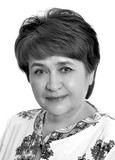The collaborative management of the ongoing professional growth of physical education instructors, grounded in the principles of the pedagogical quantori-um
Keywords:
pedagogical quantorium, associated management, physical education teachers.Abstract
Objective of the study was to create and theoretically support a model for the collaborative management of the ongoing professional development of physical education instructors, utilizing a pedagogical quantorium as a foundation.
Methods and structure of the study. The research involved interviews with 25 heads of pedagogical quantories, 568 high school students and their parents, and 82 physical education teachers. This allowed us to evaluate the factors that influence professional choice, the acquisition of teaching skills, and the continuous professional development of teachers. Additionally, it provided insights into the effectiveness of the pedagogical quantarium in the field under investigation.
A new model of pedagogical quantum management was created – a model of collaborative management that involves the direct participation (inclusion, engagement) of all stakeholders in the management process. This model aims to foster the necessary development of physical education teachers.
Results and conclusions. Based on the examination of the operations of pedagogical quantories, it was observed:
- a) the minimal utilization of the equipment accessible in the laboratory for the consistent advancement of physical education instructors;
- b) the insufficient resources for instructional training that align with the peculiarities of physical education and student development;
- c) the absence of resources and methods for professionally orienting schoolchildren towards pedagogical careers in the realm of physical education;
- d) the lack of interaction with the parents of schoolchildren, applicants, and students.
The proposed model of integrated management can guarantee:
- a) the continuity between all phases of continuous professional development for physical education instructors: selecting a teaching profession (schoolchildren), acquiring professional qualifications (students), and advanced training (practicing instructors);
- b) enhancing the quality of teacher education, formation, and professional development;
- c) attracting talented older students to teaching activities.
References
Kuzmina N.V. Ponyatiye «pedagogicheskoy sistemy» i kriterii yeye otsenki. Metody sistemnogo pedagogicheskogo issledovaniya. N.V. Kuzmina [ed.]. Moscow: Narodnoye obrazovaniye publ., 2002. pp. 7-52.
Ostapenko A.A., Mishareva N.Yu., Paskevich N.Ya. et al. Sopryazhen-nyye obrazovatelnyye sistemy: modeli, struktura, vozmozhnosti. Shkolnyye tekhnologii. 2012. No. 6. pp. 41-59.
Rozhnova E.N. Sopryazhennoye upravleniye protsessom formirovaniya gotovnosti spetsialistov srednego zvena k upravlencheskoy deyatelnosti. PhD diss. abstract. Moscow, 2018. 25 p.
Tkach D.S. Sopryazhennaya obrazovatelnaya sistema professionalnogo pedagogicheskogo obrazovaniya. Vestnik MGIMO-Universiteta. 2013. No. 1 (28). pp. 200-204.
Baxter G., Hainey T. (2020), Student perceptions of virtual reality use in higher education. Journal of Applied Research in Higher Education. Vol. 12. No. 3. pp. 413-424.
Fui-Hoon Nah F., Zheng R., Cai J., Siau K., Chen L. (2023). Generative AI and ChatGPT: Applications, challenges, and AI-human collaboration. Journal of Information Technology Case and Application Research. No. 25(3). pp. 277-304.

Additional Files
Published
How to Cite
Issue
Section
License
Copyright (c) 2025 Theory and Practice of Physical Culture

This work is licensed under a Creative Commons Attribution 4.0 International License.
